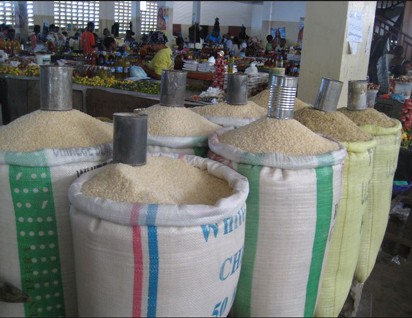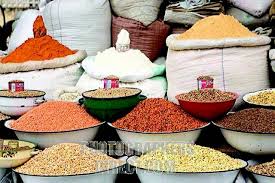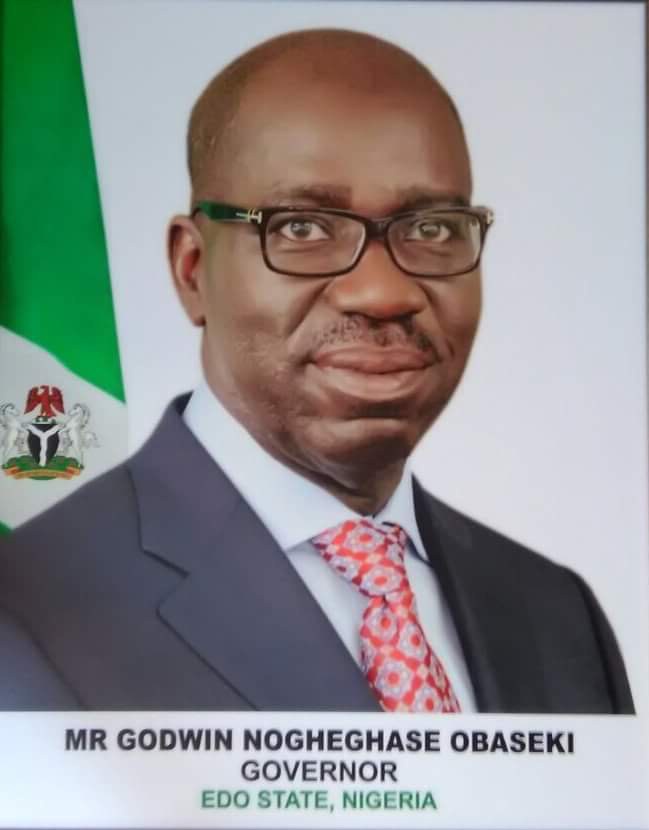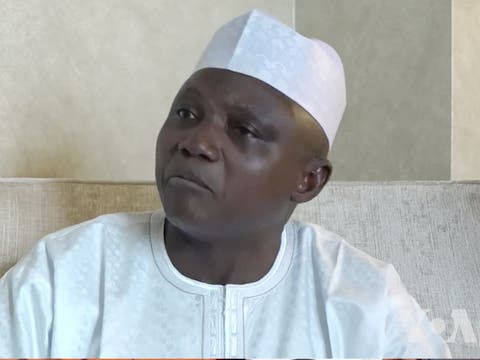In this two-part report, KUNLE FALAYI, finds out how two Nigerian states known for massive production of two ‘golden crops’ – cocoa and rice – went from the highest producers of the crops in the country, to the highest producers of cannabis
Forty-five-year-old Omobomi Olanrewaju, was in a five-foot by five-foot kiosk where he sells soft drinks having a light-hearted conversation with some of his friends when this reporter walked in.
The goods in Olanrewaju’s shop, one of many that dot that street in Ogbese, Ondo State, in southwest Nigeria, could not have been more than N20,000. But when the conversation with him started, it became clear that was all the source of livelihood he depended on.
But life for this man, could have been way different. If things had been the way it used to be in the days of his father, he could be living a wonderful life now, he said.
By the time his father died many years ago, Olanrewaju said he left at least six hectares of cocoa farm. It was supposed to be a source of wealth, but it quickly became a burden to the old man’s children.
“If I have the means to cultivate that cocoa farm, you can imagine how rich I would be by now. But if I venture into the cultivation, everything I make from it would go into labour and agro-chemicals. If I want to die young and in poverty, then I would go and cultivate what is left of my father’s six hectares of cocoa farmland. Many of the cocoa trees have even died off. Cocoa farming is not a joke anymore. The profit is not worth it,” the man said, with an expression that tells of the seriousness of his explanation.
This same kind of answer would be repeated by many former cocoa farmers and children of cocoa farmers that this reporter spoke with during a two-day visit to the community.
Two crops, one love
The rustic town of Ogbese in the northwest corner of the state, was once a centre of massive cocoa farming like many other towns of Ondo.
But today, Ogbese has become a community with a single reputation – one of Nigeria’s largest producers of cannabis, popularly called Indian hemp.
Just few weeks ago, the National Drug Law Enforcement Agency intercepted a shipment of 3.7 tonnes of cannabis in the area.
Few years ago, an NDLEA commander in the state said the duo of Ogbese and Owo, another town in the area, accounted for at least 95 per cent of the cannabis plantations in the state.
The reason for the large scale cannabis cultivation became apparent.
The residents explained that it is simply a matter of which of either cocoa or cannabis mostly satisfies their love for money with relatively easy production process.
“Imagine spending three to four years to cultivate cocoa from seedling to fruiting and selling it at about N500 per kilogramme despite the labour and expenses on chemicals such as Ridomin (used to fight black pod disease). But a cannabis farmer spends about six months in his own farm with little labour or expenses of fumigation and makes almost N10,000 on one kilogramme of the weed. For those who are desperate to make money, which product do you think they would rather cultivate?” a farmer asked correspondent.
This explanation may not be totally off the mark.
One tonne of cocoa according to the International Cocoa Organisation, sells at $2,520/tonne (about N794,430) as of November 11. This means N794.43 to a kilogramme.
On the other hand, the NDLEA spokesperson, Mr. Mitchell Ofoyeju, said one tonne of cannabis sells for about N10m ($31,720) on the street. That is about N10,000 for one kilogramme.
The result of this disparity is the gradual ‘death’ of cocoa and a massive cultivation of cannabis, in a state once known as the cocoa powerhouse of Nigeria.
In fact, in the 60s, Nigeria was rated the second largest cocoa producer in the world, while the area that later became Ondo State produced about 70 per cent of national output, according to the office of the state’s cocoa revolution programme.
But currently, cannabis cultivation in Ondo State has become so massive that NDLEA discovers and destroys hundreds of hectares of these farmlands every year.
In 2014, for instance, what was described as the largest cannabis farmland in Africa was found and destroyed by the agency in Ondo State.
A land built with cocoa wealth
“There was a time when being a cocoa farmer was synonymous with being a millionaire,” Chief Olatunji Ishola, the Vice Chairman of the Ondo State Agricultural Commodities Association, told our correspondent.
The truth in this assertion has a root in the history of the old Western Region of Nigeria, where its late Premier, Chief Obafemi Awolowo, is widely regarded as the man who used cocoa wealth to build the following infrastructure.
Africa’s first television station in tropical Africa (Western Nigerian Broadcasting Corporation )
The Obafemi Awolowo University (known as Africa’s most beautiful campus at the time)
University of Ibadan (Nigeria’s premier university)
Cocoa House (Africa’s tallest building till the 60s; a monument erected to signify the region’s domination of cocoa production)
Apart from these main four monuments of the cocoa boom era, the first set of post-independence infrastructure in western Nigeria like roads, schools and hospitals came to existence through cocoa wealth.
Export revenue from cocoa also allowed the western region government to put in place what has been touted as the country’s most effective free education system till date.
Then Nigeria struck oil
Nigeria’s economy in the 50s, and post-independence was driven only by agriculture. But when crude oil exploration and production began in the 60s, the oil boom shut down attention from agriculture.
There is a general agreement among economists and political scientists that Nigeria’s economic woes started as soon as the nation discovered oil.
The discovery of oil was a curse to Nigeria, Professor of Political Economics, Pat Utomi, said. According to him, all the myriad of challenges facing the country today originated from the country’s oil wealth.
At the height of its oil wealth, Nigeria ranked sixth in global oil production. According to the energy expert, Dr. Obinna Duru, between 2010 and 2015, Nigeria made at least $470bn (about N148tn in current exchange rates) from oil.
But in contrast, a United Nations report on Nigeria’s Common Country Analysis says presently, 64 per cent of Nigeria’s 174 million populations lives in poverty. In 1960 when agriculture was the driver of the economy, it was a mere 15 per cent, according to the National Bureau of Statistics.
In the 60s, while the export of cocoa was creating wealth for farmers in western Nigeria, groundnut was making rich men of some in the northern Nigeria the same way palm oil, rubber, timber and cotton became a source of high income in many other parts of the country. The historical groundnut pyramids of Kano grew. But focus soon shifted to oil, as the pyramids gradually disappeared.
The incursion of cannabis cartels
In Ogbese, a town once surrounded by hectares upon hectares of cocoa farms, large cocoa plantations have become a rarity.
Jonah Agagaraga, an okada rider, who took our correspondent to a farmland where his father once owned 10 hectares of cocoa, spread his arms as he explained the expanse of what the plantation used to be like.
On one part of the farm, a lone cocoa tree stands with few pods hanging on it. The tree stood in the middle of weeds like a tragic hero of the golden days gone by.
In another part of the farm, few fruiting trees still stood with pods hanging on, many of them dying a slow death from the ravages of black pod disease.
It is doubtful if Jonah, son of the late Chief Agagaraga, could gather enough money from the meagre revenue of his commercial motorcycle to fumigate what is left of his father’s cocoa plantation.
“What is the point?” he said. Like Olanrewaju, the kiosk owner, the massive plantation left by his father, became a burden after the old man’s death because the support enjoyed in the golden era of cocoa was no longer available.
But wouldn’t the harvest and revenue have been worth the investment of time and money if he had tried to rescue the surviving cocoa?
Jonah did not think so.
“In fact, it was so bad that cocoa was selling for N200 per kilogram at a time. That was N200,000 per tonne. That would have been a waste of energy and money,” he said.
But what about now when the price is much higher? Jonah is still sceptical.
“If the price remains this high by next year, I will try. I heard I can make almost N1m from one tonne now. That is a lot of money,” he said.
Jonah explained that many families such as his have simply leased or sold large portions of their late fathers’ cocoa farmlands to enthusiastic farmers from Delta or Edo states.
In Ogbese and former cocoa-rich lands in the area, it was learnt that this arrangement has become so popular most of the cocoa farmlands have been taken over by people pretending to be cocoa farmers.
Jonah took this reporter on his motorcycle to an expanse of land that had no crops on it. It belonged to a popular family in the community, he said.
One day, one of such “farmers” approached the family and a sharecropping arrangement was made. This time, the family asked to be given 50 per cent of the profit from the cocoa cultivation on the farmland.
Two years down the line, one of the members of the family, who was disgruntled about the arrangement visited the cocoa farm and found that much of it had been turned to a cannabis land.
The family member was said to have immediately contacted the NDLEA operatives who raided the farm.
Twenty-five hectares of hemp plants were destroyed during the operation that lasted one week. Five of the farmers were arrested and charged to court by the agency.
Stories such as this have become all too common in the area where many families even deliberately turn a blind eye to the illegal cultivation on their land, feigning ignorance, so far as the profit comes in regularly.
Agronomist and Chairman of the Ondo State Agricultural Commodities Association, Mr. Akin Olotu, said this system has become a widespread practice that many cocoa producing communities in Ondo State now give out their lands to people with promise of share in the profit of the farm produce.
“This is the problem in all the main cocoa producing towns we have been to. When the owner of the cocoa farm is dead, the children look for people who would take charge of the farm and give them a share of the profit. Unfortunately, this is when some of the new people begin to grow illegal crops,” he said.
Much of the farms in Ogbese are barely accessible by motorcycle. For the few cocoa farmers remaining in Ogbese, this is a tragedy. They said the bulk of their products decompose before they are able to get out of the farms.
But the natives say it is an advantage to Indian hemp growers who have become sophisticated and violent in their operations. The cannabis farms are sometimes discovered inside the jungle that requires at least 30 minutes of trekking from the nearest road. In fact, Ondo State has the largest forest reserves in the country, which government has no capacity to completely monitor. Locals say most of the remote parts of these reserves have also been turned to cannabis farms by the drug cartels.
“Those who lease their lands to strangers here don’t just go there anyhow. If they do, these Indian hemp growers, may shoot them dead or attacked with cutlasses because they believe our people report them to NDLEA,” a native, Elder Oluwaniran Gbadegun, said.
Few years ago, two officials of the NDLEA were killed by the members of a drug cartel that owned a cannabis plantation the agents went to raid.
“Our men have been attacked on cannabis farms on several occasions. The cartels also set dangerous traps on the bush paths leading to the cannabis farms. Many firearms have equally been recovered from cannabis farmers. So, it is a serious battle,” Ofoyeju said.
Ofoyeju, who corroborated the use of much of the forest reserves around the country for hemp cultivation told our correspondent on Friday that NDLEA’s operatives had just seized 31 tonnes of cannabis on a plantation at the Orita-Ijebu Forest Reserve in Ikire, Osun State.
“Sixty seven bags containing 30,992kg of cannabis were transferred to the Osun State Command of the agency for further investigation and prosecution.
“The haul were found in 27 storage facilities located within the farmland. The drug cartels have indeed invaded government forest reserves for the cultivation of cannabis,” he said.
An illicit crop fuelled by high consumption
In Nigeria, where there is a strong marijuana culture, the hemp is prohibited by an act of parliament as a result of its high rate of abuse and absence of medical or non-smoking application in the country. It is the single most abused drug in the country.
According to the World Drug Report of the United Nations Office of Drug and Crime, Nigeria ranks sixth on the list of the top 10 highest users of marijuana or cannabis with a 14.3 per cent use in the country.
The seizures and destruction of cannabis by Nigeria’s drug agency alone attests to the magnitude of the industry.
Between 2013 and 2015, the NDLEA destroyed farmlands containing 68.1 million kilogrammes of cannabis, with a street value of N681bn.
In 2013, out of the 339,968kg of drug seized by the NDLEA, 205,373kg of it was cannabis alone. That year, the agency destroyed 847 hectares of farmland across the country, containing an estimated 10,051,554kg of cannabis.
In 2014, the agency seized 158,852kg of cannabis and destroyed 4,529 hectares of cannabis farmland containing an estimated 53,719,342kg of cannabis plants.
The following year (2015), the cannabis seizure was unprecedented. The NDLEA seized 871,480kg (871 tonnes) of cannabis and destroyed 377 hectares of hemp farmland containing 4.4 million kilogrammes of cannabis. That year, in one of several seizures in Ondo State, the agency found 34,080kg (34 tonnes) of cannabis in a single location in the state.
In contrast, Nigeria produced 721,000 metric tonnes of cocoa in the same three-year period. In the 2012/2013 season, the national cocoa output was 238,000 metric tonnes, 248,000 in 2013/2014 and 235,000 in 2014/2015. If one uses current exchange rate, this will all amount to N527.7bn at current cocoa international price.
Current challenges of cocoa production
Over the last five decades, Nigeria fell from its position as second largest producer of cocoa in the world to fourth after Ivory Coast, Indonesia and Ghana. In the 2014/2015 season, the country produced 235,000 metric tonnes.
The Federal Government presently clamours for more interest by youths in Agriculture in the face of dwindling oil revenue, which accounts for 90 per cent of the country’s exports.
But many challenges that have kept the sector in the doldrums remain unaddressed.
One of them is low capacity of farmers and lack of mechanisation.
An Ondo State indigene, who had lived in Germany for over four decades, Mr. Olusegun Arowolo, said he was so concerned by this problem that he invented a machine, which he said could break as much as 20,000 to 30,000 cocoa pods per hour without destroying the beans.
After eight years of designing the machine, he eventually found a company to build it and ship it to Nigeria.
He said, “If the government is serious about diversification, you have to encourage young people to get involved in agriculture and stay there. Cocoa production can only attract people when they know there are machines to aid the process.
“My machine is the missing link in cocoa processing. If you put one million pods of cocoa on the ground, imagine how many weeks it would take to break the pods by hand. Now imagine having a machine that can achieve the same thing in a few hours. If the government is serious about returning cocoa production to its past glory, it has to make this sort of machines available to farmers.”
In the 60s through the 70s, the value chain of cocoa production was strong with marketing boards and farmers’ cooperatives serving as middlemen. All these disappeared in the era of Nigeria’s oil boom.
Stakeholders say these have to be restored while the companies serviced by cocoa products, many of which have disappeared over the years, have to be encouraged with policies and incentives.
In the Agriculture Promotion Policy prepared by the Federal Ministry of Agriculture and Rural Development few weeks ago, the Federal Government recognised inability to meet domestic food requirements, and inability to export at quality levels required for market success as the two main challenges facing agriculture in the country.
“The former problem is a productivity challenge driven by an input system and farming model that is largely inefficient. As a result, an aging population of farmers do not have enough seeds, fertilizers, irrigation, crop protection and related support to be successful,” the Minister, Audu Ogbeh, said.
Effort to recapture cocoa’s lost glory
In 2014, the Federal Ministry of Agriculture and Rural Development said it had distributed 140 million high yield cocoa seedlings to farmers.
But local farmers such as those at Ogbese, only wondered where all of it went to.
“We heard that rather than distribute to farmers like us, government officials sold the seedlings to their friends,” Olanrewaju, told our correspondent.
In 1976, to entrench cocoa production further in the southwest and provide jobs, the Oda Cocoa Farm Estate, a 1,774-hectare plantation, was established by the then Premier (Awolowo). But it was abandoned for decades in the era of oil boom.
The Ondo State Government in 2015 started a process to resuscitate the estate in what it tagged a “Cocoa Revolution Programme”.
Chairman of the CRP, Dr. Jibayo Oyebade, said it is a programme that would create large scale wealth for the state.
The vision is to resuscitate the lost glory of cocoa. We were given the mandate to rehabilitate all cocoa plantations in Ondo State.
He said, “We want to re-establish the old marketing board and go back to the quality that made cocoa produced in this state stand out. We plan to double the existing output of the country by rehabilitating the existing old trees. We don’t want to destroy the old trees and plant new ones. Within the next three to four years, we plan to double the production of last year.
“As part of the CRP, we have volunteer farm locations. We went to private cocoa farmers and took one in each location. We are training and building their capacities outside the Oda’s 1,774- hectare cocoa estate.”
Oyebade said those who are leaving the cocoa cultivation for Indian hemp in the state are aware of the fact that the state has the largest forest reserve in the country.
He said the cultivation of cannabis festered in the forest reserves because the government had abandoned reserves protection, leading to the infiltration of drug cartel.
“There are portions of the forest reserves that we termed ‘encroached areas’. A little of these areas is used by some people to cultivate cocoa but the larger part of the encroached areas are used to cultivate hemp,” he said.
The Federal Ministry of Agriculture and Rural Development has, however, promised that it would work closely with states and agencies to prioritise the cultivation of cocoa and other crops such as cowpeas, cashew, cassava (starch, chips and ethanol), ginger, sesame, oil palm and yams for export.
Experts speak of solution
The Chief Executive Officer, Nigerian Export Promotion Council, Mr. Segun Awolowo, said Nigeria needs to scale up cocoa production in order to surpass Ivory Coast and Ghana in production. Ivory Coast produce about 1.3 million metric tonnes, while Ghana produced about 700,000 metric tonnes in 2015 compared with Nigeria’s 235,000.
But the Chief Operating Officer, Centre for Cocoa Development Initiative, Mr Robo Adhuze, told our correspondent that this is not a miracle that can be “spoken” into existence.
He said nothing substantial could be achieved in the sector until the country puts in place a cocoa policy.
Adhuze said, “Issues concerning value chain development in the cocoa industry have been topics of discussion since 1964. They are still the same challenges facing the production of cocoa in 2016. Unfortunately, there is no policy for the cocoa industry in the country. The first step is to have a policy document that all stakeholders can sign on to.
“Past administrations like that of former President Olusegun Obasanjo made attempts to develop such policy but there have been no follow-up. If we have a cocoa policy, every other thing would fall in place. Today, there is no single entity in Nigeria that is solely in charge of cocoa and oversee its affairs whether in the private or public sector.”
Olowu, who oversees agricultural commodities in Ondo State, said large amounts of agricultural products like cocoa waste away in farm settlements in the state simply because there are no roads to bring them to the prospective markets.
“The government’s annual ritual of making grand pronouncements about the development of agriculture in the country has to stop. Government must open rural roads, think about renewable energy for the farm steads and train farmers and build their capacity,” he said.
The Chairman of NDLEA, Col. Muhammad Abdallah (retd.) explained that a concerted efforts is needed to stop cannabis cultivation while farmers should be encouraged to cultivate food and economic crops.
He said the country risks devastating food crisis if the trend of cannabis cultivation is not addressed in the country.
“Stakeholders must strategise on how to increase food production and prevent criminal organisations from diverting arable farmland for cannabis cultivation. A situation where food and cash crops are paving way for cannabis plant portend danger and deserve urgent attention,” Abdallah said.
(Punch)






